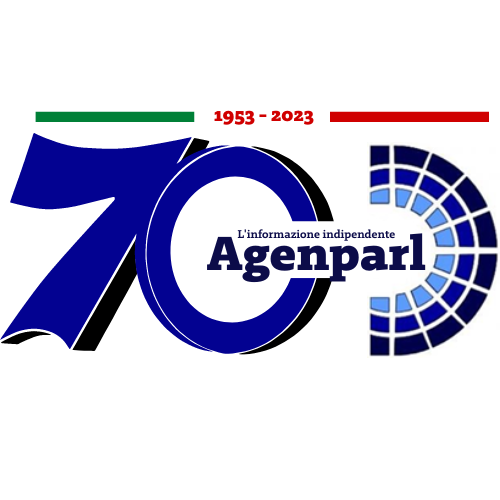 (AGENPARL) - Roma, 23 Agosto 2024
(AGENPARL) - Roma, 23 Agosto 2024(AGENPARL) – ven 23 agosto 2024 A weekly compendium of media reports on science and technology achievements
at Lawrence Livermore National Laboratory. Though the Laboratory reviews
items for overall accuracy, the reporting organizations are responsible for
the content in the links below.
….. LLNL Report, Aug. 23, 2024
Ippolito Caradonna, a biologist and automation specialist for LLNL’s
Predictive Design of Biologics team, performs experiments in the new Rapid
Response Laboratory. (Photo: Garry McLeod/LLNL)
… Beefing up biodefense
https://www.theregister.com/2024/08/16/dod_drug_discovery_supercomputer/
The Pentagon’s newest toy isn’t a fancy warfighting machine – it’s a
combined supercomputer and rapid response laboratory dedicated to beefing up
U.S. biodefense.
Located at Lawrence Livermore National Laboratory, the new machine, built in
cooperation with the National Nuclear Security Administration, will feature
the same architecture as LLNL’s upcoming El Capitan exascale supercomputer.
It will be used to advance both military and civilian defenses against
biological threats using large-scale simulations, AI modeling, classification
of threats and, with the combination of a new Rapid Response Laboratory, to
speed the development of medical countermeasures.
Read More
https://www.theregister.com/2024/08/16/dod_drug_discovery_supercomputer/
LLNL lead mechanical designer Darrel Carter developed the overall design and
assembly for the Deep Purple payload. He is shown verifying the final
mechanical torque on the assembly. In the background are Jordan Smilo, the
Deep Purple project manager, and electrical engineer Princess
Corral. (Photo: Garry McLeod/LLNL)
… Up, up and away
https://apnews.com/press-release/business-wire/birchcliff-energy-ltd-florida-aerospace-technology-0ef26c27905f4735b276282af97b4284
The Pathfinder-R (PTD-R) and Pathfinder-4 (PTD-4) spacecraft launched aboard
the Transporter-11 Rideshare mission with SpaceX from Vandenberg Space Force
Base in California on Aug. 16. The spacecrafts are part of NASA’s
Pathfinder Technology Demonstrator series, which aims to test the viability
and operational effectiveness of a variety of technologies in low-Earth
orbit.
One of the spacecrafts, PTD-R, contains Lawrence Livermore National Lab’s
Deep Purple payload. This includes two monolithic telescopes (one for UV and
the other for VIS/SWIR imaging), as well as a compact electronics module and
a novel, lightweight, carbon-composite optical housing and radiator. Its
mission objectives are to observe UV and SWIR light from high-UV stars and
the Milky Way’s galactic bulge, as well as to demonstrate space domain
awareness.
Read More
https://apnews.com/press-release/business-wire/birchcliff-energy-ltd-florida-aerospace-technology-0ef26c27905f4735b276282af97b4284
Rensselaer Polytechnic Institute researchers are creating a quantum-sensing
probe that can remotely detect and analyze unique nuclear component: (Image
courtesy of Rensselaer Polytechnic Institute)
… Light with a twist
https://wonderfulengineering.com/u-s-scientists-use-light-with-a-twist-to-detect-hidden-
A group at Rensselaer Polytechnic Institute is leading a state-of-the-art
initiative that could fundamentally alter how we detect and assess nuclear
materials. The project intends to create a sophisticated quantum-sensing
probe that can remotely detect and analyze unique nuclear components without
needing to come into direct contact with them.
At the heart of this groundbreaking research is a project known as “Light
with a Twist: An Adaptive Quantum Sensing Probe in Which a Bright Single
Photon Source is Guided in Free Space To Remotely Interact, Detect, and
Characterize Special Nuclear Materials.” This innovative initiative is part
of the Consortium for Enabling Technologies and Innovation, which is funded
by the Department of Energy’s National Nuclear Security Administration
(DOE/NNSA).
Recently, the DOE/NNSA doled out $50 million to assist nuclear security and
nonproliferation improvements, split between two university consortia. By
bridging the knowledge gap between basic research at universities and
practical laboratory work, these grants hope to develop a pool of future
professionals who will support efforts related to nuclear security.
Los Alamos National Laboratory, Argonne National Laboratory, Lawrence
Livermore National Laboratory, and 12 other national laboratories collaborate
in one of the consortia headed by the Georgia Institute of Technology. The
goal of these organizations working together is to advance the fundamental
research that underpins nuclear security and nonproliferation efforts.
Read More
https://wonderfulengineering.com/u-s-scientists-use-light-with-a-twist-to-detect-hidden-
Researchers constructed this image of a copper nanofoam with help from SLAC’s
Linac Coherent Light Source. (Image: Adra Carr/Los Alamos National
Laboratory)
… Fusion foams up
https://phys.org/news/2024-08-ray-imaging-technique-fusion-nanofoams.html
The sun’s fusion reactions drive its temperatures to thousands of degrees,
and today scientists are seeking to recreate these star-powering processes in
the lab as a means of an alternative clean energy.
One avenue is inertial fusion energy experiments, but for those to work, the
fusion fuel must be held in precisely the right configuration, with one
promising approach being to use a porous foam. The trouble is, no one is
quite sure how well these nanofoams work because existing techniques either
destroy them or lack the resolution to study them in detail.
Now, researchers including Lawrence Livermore scientists report they’ve
developed an X-ray imaging technique that leverages the unique properties of
Linac Coherent Light Source (LCLS) at SLAC National Accelerator Laboratory to
resolve the 3D nanostructure of a copper foam with a level of precision that
is relevant to fusion experiments.
Read More
https://phys.org/news/2024-08-ray-imaging-technique-fusion-nanofoams.html
Wenyu Sun, Aditya Prajapati and Jeremy Feaster in the lab where their
research takes place. (Photo: Blaise Douros/LLNL)
… Chemical production gets a cleaner boost
https://dailyenergyinsider.com/news/44821-lawrence-livermore-scientists-find-cleaner-chemical-production-method/
A team of Lawrence Livermore National Laboratory (LLNL) scientists and
collaborators have developed a new electrochemical method to make production
cleaner and more energy-efficient.
The method uses thin film nickel anodes that help clean up chemical
production. The films are important, the team said, because they give a
consistent surface to work with.
“Thin films eliminate complications from porous/rough structures or varying
thicknesses, allowing us to focus on the true properties of the catalyst
material,” said LLNL postdoc Aditya Prajapati.
Electrolyzers convert electrical energy into molecules with high
potential-energy densities. The current ones struggle with energy efficiency
due to the oxygen evolution at the anode. The LLNL team found that replacing
the oxygen evolution reaction with biomass oxidation could cut energy use by
more than 50 percent.
Read More
https://dailyenergyinsider.com/news/44821-lawrence-livermore-scientists-find-cleaner-chemical-production-method/
——————————————————————————
Founded in 1952, Lawrence Livermore National Laboratory https://www.llnl.gov
provides solutions to our nation’s most important national security
challenges through innovative science, engineering and technology. Lawrence
Livermore National Laboratory is managed by Lawrence Livermore National
Security, LLC for the U.S. Department of Energy’s National Nuclear Security
Administration.
Read previous Lab Report articles online https://www.llnl.gov/news/lab-report
— Unsubscribe from this newsletter :
